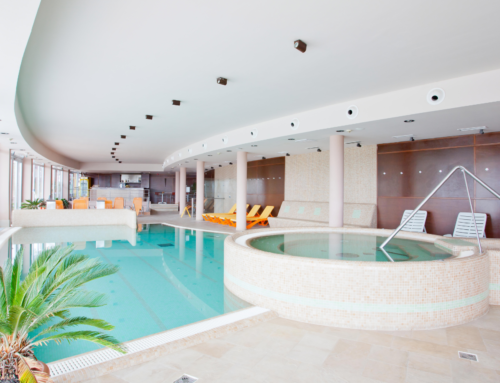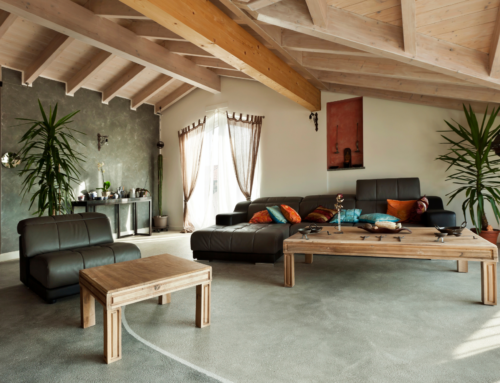Polyaspartic coating is certainly hitting the headlines. As its popularity increases, one of the most commonly asked questions is whether or not it’s better than epoxy.
The key aspect is that both have their pros and cons – deciding which is the better choice for your flooring project is a case of comparing the two. Whether you’re looking for a garage floor coating, driveway, or a swimming pool surround, you need to understand the strengths and weaknesses of each to allow you to make a truly informed decision.
So, let’s compare the two…
Pitting Polyaspartic Against Epoxy: a head-to-head comparison
Durability
Epoxy flooring has great durability properties but is still vulnerable to abrasion. The chemical composition of polyaspartic makes for a hard, incredibly robust finish that – even with the toughest of use (such as from heavy machinery and abrasion risk) – won’t scratch, chip, scuff or become damaged.
Conclusion: Polyaspartic flooring is the better option for challenging environments, such as high-traffic garages, warehouse use, etc.
UV vulnerability
Over time, epoxy floor coatings will become sun damaged, when exposed to direct sun. The chemical composition of polyaspartic makes it virtually immune to the effects of sunlight. It won’t yellow, become brittle, peel or fade, making it the prime choice for exterior use.
Conclusion: Polyaspartic wins hands down…
Cost
The short version is that polyaspartic is more expensive than epoxy. However, this is for good reason. Not only is the product more complex to work with and generally requires professional installation, but – thanks to its outstanding durability – will last considerably longer in harsh environments. The upshot of this is that, if you consider polyaspartic’s value for money over the long term, you’ll get more longevity for your buck.
Conclusion: Polyaspartic flooring is initially more expensive than epoxy but, over the flooring’s lifespan, could end up saving you money.
Drying time
Polyaspartic dries and cures very fast – in less than an hour, in the right environment. Epoxy takes much longer – it should be left for up to 14-16 hours before it becomes dry enough to walk on.
Conclusion: Polyaspartic wins… (However, see installation, below, for more details).
Installation
Because of the short polyaspartic curing time, the margin for error when installing is small. It also has a shorter ‘pot life’ when compared to Epoxy. This means that once the product is opened, it will start to dry quickly. Epoxy, on the other hand, has a longer pot life, Unless you have some experience in applying flooring products, Polyaspartic generally requires professional installation, while epoxy is more conducive for DIY application. Just be aware that both epoxy and polyaspartic have their own characteristic odour when in a liquid state, so ensure good ventilation and wear suitable protection to ensure no toxic fumes are inhaled.
Conclusion: Epoxy is the clear winner for DIY installation with easier application process due its longer pot-life.
Non-slip properties
Both can be slippery when wet, Polyaspartic with more flexibility and Epoxy with more rigidity. However, there are Slip Resistant/Grits & traction additives available for both and are highly advised to prevent unnecessary slips and falls (and potential lawsuits).
Conclusion: Both are the same and Slip Resistant Grits can be added to either of them to create and non-slippery floor finishing system.
The Pros and Cons of Each
While looking at how each compare against the other is useful, considering the pros and cons of each type of flooring is also a helpful tool when deciding which type to choose.
Epoxy flooring: the pros
- The cheaper of the two for initial installation.
- Resistant to chemical and heat attack.
- Has a long pot life.
- Easier to apply – suitable for DIY installation.
- Provides excellent adhesion to the surface below.
- Comes in a virtually infinite range of colours, with multiple finish options. Colour coding/demarcation can be tailored as per individual requirements.
Epoxy flooring: the cons
- Will fade and yellow with UV exposure.
- Vulnerable to abrasion.
- Takes up to 16-18 hours to cure.
Polyaspartic flooring: the pros
- Incredible resistance to UV rays – will not fade, yellow or peel.
- High temperature resistance, from -20 Celsius to +60 Celsius.
- Extremely resistant to abrasion and damage, making it highly suitable for challenging areas and heavy machinery/traffic environments.
- Fast curing.
- Extremely long lasting (longer than epoxy).
- Stain resistant.
- Comes in a wide colour range, with multiple finishes and can be tailored to colour-code and demarcation requirements.
- Ideally suitable for both indoor & outdoor surfaces.
Polyaspartic flooring: the cons
- Shorter pot life.
- May require professional installation or SHIMICOAT Training.
- Initial installation cost is more expensive than epoxy.
Polyaspartic vs. Epoxy: making the right choice
Deciding which is the correct flooring for your requirements certainly isn’t as simple as one being better than the other. Every project is individual, requiring careful consideration of the pros and cons of each. The outstanding resistance to UV attack and temperature extremes makes polyaspartic a serious consideration for outdoor use. However, the initial cost will undoubtedly have a bearing, as will whether or not you want to install the floor yourself, as opposed to paying for a professional service.
Shimicoat is a leading Australian provider of both epoxy and polyaspartic flooring. We’ve got decades of experience and can provide tailored advice to help you decide which flooring system best suits your needs. Get in contact today for a no-obligation chat with one of our flooring experts.





